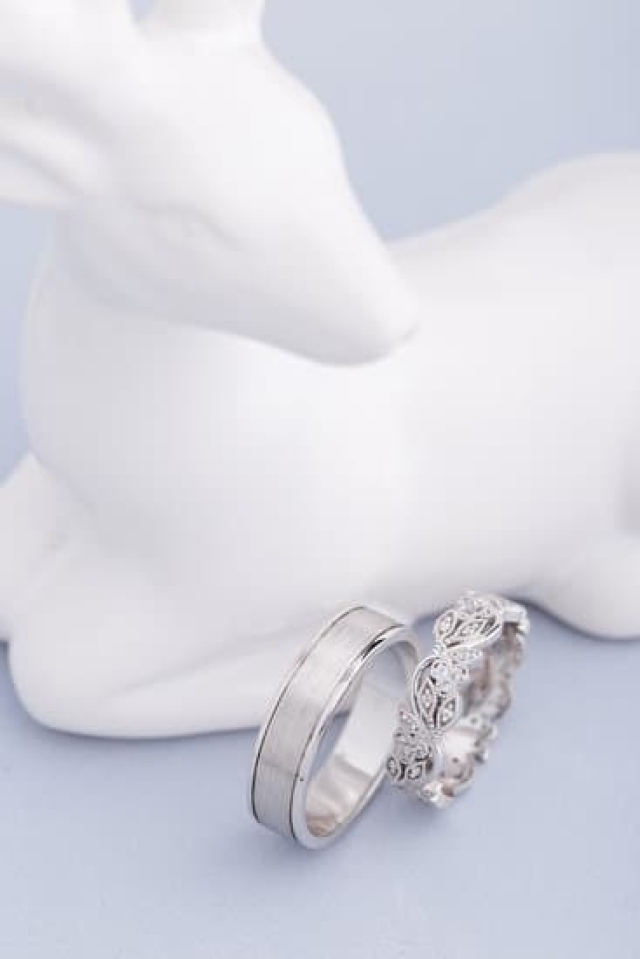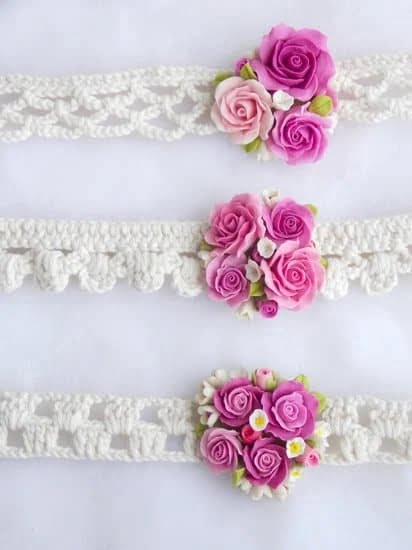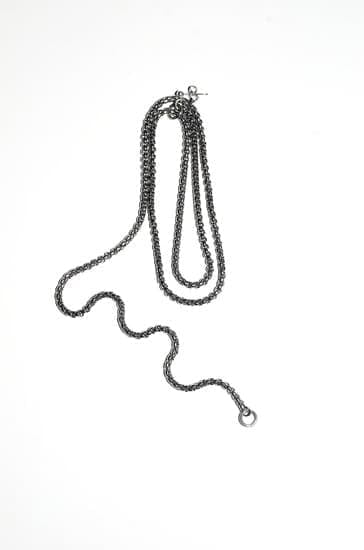Turquoise jewelry has always been popular with collectors and is a well-loved stone by many people across the world. At some point, any piece of turquoise jewelry may need to be repaired or adjusted.
The process for doing so depends upon the type of repair needed and can range from simple buffing and polishing to more complex methods of repair. To ensure your piece of Turquoise Jewelry is properly maintained and brought back to its original form, it’s important to understand how to do it in the correct way.
Buffing and Polishing
One of the most common methods used when trying to repair an item made from Turquoise Jewelry is buffing and polishing. This helps reduce scratches, restore color, and give the jewelry a natural shine once again. It can be done easily at home by using a soft cloth such as cotton mixed with a bit of water or jewellery cleaner that contains mild abrasives like baking soda or flour.
Make sure you rub gently in circles until all surfaces are smooth and shiny once again. If you are dealing with tough dirt build up, adding a small amount of dish soap might help remove it too.
Cleaning With Care
When cleaning pieces made from turquoise jewelry, it is important that much care should be taken not to damage it in any way; particularly if there are parts which have already been repaired before. You should try to avoid harsh chemicals on this delicate material as these can discolor or even ruin its original look.
Always use a soft brush with soapy warm water instead as this will help get rid of grime without damaging the stone itself or any present wrapping tying the stones together like wire work etcetera.
Additionally, make sure they are never soaked nor exposed too high temperatures whilst cleaning them too – as turning them into dry heat can also cause discoloring too. If necessary, then use alcohol-based glass-cleaner but test just a tiny area first (like on inside corner) just incase it causes discoloring – if so then rinse off immediately.
Reassembling Pieces
History of Turquoise Jewelry
Turquoise jewelry is often seen as a sign of wealth, prosperity and good luck. Turquoise was one of the very first gems to be mined, with evidence showing its use in prehistoric times. Ancient Egyptians had a deep appreciation for this stone, by not only wearing it but by including it in stonework and decorations throughout their historic monuments.
In Persian culture it was believed that turquoise jewelry would protect the wearer from evil, earning it the title of “stone of life”. Turquoise has been around for thousands of years, prized by ancient cultures and still coveted today as attractive yet affordable accessory item.
Proper Care of Turquoise Jewelry
As with any precious stone or piece of jewelry, proper care is key to keeping your beloved pieces in pristine condition. Regular cleaning with a soft cloth will ensure your turquoise remains clean and polished, while avoiding contact with harsh chemicals such as chlorine or bleach will help preserve their luster.
Remember to store your jewelry carefully when not in use – preferably placed alone inside an individual storage pouch or box to avoid damage by exposure to excessive heat and humidity. Lastly, if you have any concerns regarding the care and cleaning of your turquoise-based pieces ask a professional jeweler for advice
Repairing Broken Turquoise Jewelry
If your turquoise-based jewelry has become broken then professional repair may be necessary. If only minor repairs are needed such as resetting beads into place or soldering weak links then this can usually be done relatively easily at home with the right tools and supplies on hand.
However for more serious damage such as restoring a cracked stone back together an experienced jeweler should always be consulted to perform this kind of repair work. Once repaired, providing continued proper care will ensure that these cherished pieces remain strong for years ahead – all you need is some patience and regular maintenance.
Types of Turquoise Jewelry
Turquoise jewelry is a timeless piece of accessory that can be made into many unique designs, from necklaces, bracelets, and earring to rings. Turquoise has been used in jewelry throughout history due to its beautiful sky blue color and the availability of the raw material in North America and the Middle East.
Today it continues to be a traditional component for artists working in both silver or gold settings. While nearly any type of repair job is possible on turquoise pieces, some types of works work better than others, depending on the age, condition and design of the item.
Repairing Pitted or Cracked Stones
When faced with minor cracks or areas where the stone has cracked off, it may be easy to restore the piece using a substance like epoxy or adhesive designed specifically for stones. This will help to glue it back together without harming any other features and ensure that you have good contact between the parts being joined.
The glue should be applied sparsely so as not to create uneven surfaces which can detract from the overall look of the piece once finished. When applying an adhesive , use caution when determining how much pressure needs to be applied as too much can cause ridges which also detract from its original beauty.
Re-Cutting Stones That Have Been Damaged
If stones have more severe damage such as severe cracking or chipping they may need to be cut and refaced using a professional lapidary tool. This can become very expensive as lapidary are very specialized tools which require skill and experience thus increasing cost even further if you plan on having your local jeweler carry out this process for you.
Do keep in mind that there is an art form involved with working with turquoise due its unique attributes such as color variation , hardness &adds purity so care must be taken when attempting this task. In many cases however, re-cutting might ultimately result in a better looking outcome then simply just ‘patched’ version.
Overview of Required Tools and Materials
If you have some broken turquoise jewelry that you need to repair, the necessary supplies may vary slightly depending on the type of repair needed. This guide will provide an overview of all the tools and materials you’ll need to complete these repairs successfully.
First, gather together any cleaning supplies you may need to clean up your jewelry pieces. An old toothbrush is great for scrubbing caked-on dirt, mud, or other residue off necklaces and earrings that have seen better days.
You should also use some baking soda, as this is a gentle abrasive that can easily restore luster to oxidized pieces without damaging their setting or stones. Additionally, diamond polishing cloths can be used to lightly buff tarnished metal and make it shine like new again.
When it comes to tools for loosening prongs or otherwise manipulating the jewelry settings themselves, tweezers are essential for gripping small objects with precision. Another good tool to have on hand is a pair of pliers; these will come in handy when bending or straightening wires or chains on necklaces and bracelets. Lastly, if any missing prongs need replacement there are also kits available with specifically sized replacement prongs so that your jewelry looks as good as new.
Once you have everything ready it’s time to go ahead and begin repairs. Start by cleaning your jewelry pieces thoroughly before attempting any repairs-even slight discoloration can become difficult or impossible to remove once repairs have been made.
After everything is nice and clean, proceed carefully making sure not to force anything into place nor tackle any complicated procedures until you feel completely confident about it first. With these basic tools and steps at hand you should be able to confidently repair your Turquoise jewelry and restore its original beauty in no time at all.
Step-by-Step Guide
When you buy a piece of turquoise jewelry, you may find that it is dull and needs to be cleaned and/or polished. Restoring the luster of turquoise jewelry can be done easily with a few basic supplies and some patience. This guide will provide step-by-step instructions on how to clean and polish your great finds so they look new again.
Step 1: Prepare the worksite. Before beginning any sort of repair or polishing project, it is important to create a safe and organized workspace. Gather all the materials you need before starting and make sure there are no distractions nearby (children or pets included.). Place a towel at the center of your workspace to cushion against any shocks during the cleaning process.
Step 2: Clean your jewlery. Depending on the type of dirt or dust present on your piece, different cleaning methods should be used, but generally warm soapy water is enough to do the job. Make sure not to let excess water stay on your jewelry; immediately submerge it in a fresh bowl of room temperature water with 1 – 2 table spoons of Dawn Original dishwashing liquid (or other mild detergent), stir gently and soak for 10 minutes uncovered.
After soaking rinse it several times in cold running tap water until soap suds are completely gone from the piece. Pat dry with a soft cloth or paper towels.
Step 3: Polish your jewelry. Once the jewelry has dried completely you can start polishing it using gentle non-abrasive cleaner such as polish paste and cotton wool swabs, or silver cloth if needed for more stubborn tarnish spots. Start by applying small amount of cleaner onto swab and gently rub along desired area in circular motion until achieving desired brightness level – do not press too hard.
Afterwards, rinse under cold running tap water (to remove polish residue) then pat dry with soft cloth or paper towels yet again – DO NOT use towel. Finally finish off with buffing cloth provided in most polishing kits which further improves shine & brilliance by removing minor surface scratches caused by cleaning process itself just now trust me this one – highly recommended procedure right here ;).
Step-by-Step Guide
When it comes to irreplaceable heirlooms and sentimental memories, properly maintaining the turquoise jewelry in your possession is equally as important as purchasing quality pieces. Though many jewelry stores offer specific methods for cleaning and caring for turquoise, learning how to repair turquoise jewelry yourself can save time and money in the long run. Here is a step-by-step guide outlining how to make simple repairs to your own turquoise jewelry.
The first step towards repairing your damaged turquoise jewelry is selecting an appropriate adhesive. Many glues used in arts and crafts are not effective for this task; you’ll need to purchase an epoxy adhesive designed specifically for jewelry.
Make sure you select one that is both water-resistant and flexible so that it can tolerate any movements or vibrations experienced during wear or cleaning. To ensure a secure fit, mix equal amounts of the two parts of the epoxy according to the manufacturer’s instructions.
After mixing the glue together, begin placing small drops of the adhesive onto either side of the seam where the surface bed is cracked or split. Once placed, press both sides of your jewelry back together. It’s important to do this slowly and delicately so as not to put too much pressure on either side while keeping your fingers well away from where it’s being pressed together.
Alternatively, you can use a pair of tweezers in order to align those pieces snugly without risking them slipping apart again after setting before pressing down with your thumb on top for further security. Let the piece sit for 24 hours before wearing it; this will give the adhesive enough time to cure properly before use.
Finally, carefully buff away any excess glue from around where you patched it up with a piece of soft cloth or chamois until tout all traces have been removed from view – forgetting this step may result in residue attracting debris or discoloring over time that must be removed professionally later on.
If done correctly and provided routine maintenance – such as regular cleaning and avoiding contact with cosmetics chemicals – have been followed then there should be no further repairs needed at least until any natural signs ageing occur again – sometimes years later.
Until then happy wearing.
Troubleshooting Tips
Turquoise jewelry is a timeless and traditional fashion accessory that adds an extra element of sophistication and style to any outfit. As with any piece of jewelry, however, there is always a chance that it can become damaged over time. If your turquoise jewelry needs repair, here are some helpful tips get you started.
The most common issue with turquoise jewelry is that the stone may become chipped or cracked over time. When this happens, the first step should be to carefully clean the broken pieces of the stone the best you can to remove dirt and debris.
Once the stone is cleaned, use a small brush and soapy water to gently scrub away any remaining dirt or buildup from around the edges of the crack. Make sure to take special care and move slowly when brushing; it’s easy to accidentally make small scratches on the surface of the turquoise if not careful.
Repair kits for turquoise jewelry are available online, which makes repairing cracks simple when done correctly. These kits usually come with instructions on exactly how to use them; however, if you would like extra help understanding how they work a professional jeweler might be able to provide guidance.
The procedure itself typically involves combining resin glue with tiny pieces of turquoise powder as they bond together while drying in order to fill in or blend out any cracks within your piece of turquoise jewelry. After everything dries completely, it’s best practice to go back over once more with a light polish using either cotton-tipped swabs or specialized polishing cloths before reaching for your favorite necklace or pair of earrings again.
If larger issues occur such as large parts falling off entirely due to wear and tear or damage from accident, then it might be best consult a reputable jeweler who specializes in repairs rather than attempting repairs yourself at home as this could result in further issues that cause further damage down the road. This way you can feel confident that your treasured piece will be taken care of properly by someone knowledgeable with these types of repairs.
Cheap Alternatives to Professional Repair Services
Turquoise jewelry has been used by civilizations for centuries as a symbol of wealth and power. Although the stone’s beauty is breathtaking, it must still be cared for regularly to maintain its value.
Turquoise jewelry can suffer from a variety of problems, such as discoloration, chipping or fading. Repairing damaged turquoise jewelry is not always an easy task but there are some inexpensive alternative techniques that may be tried before turning to professional repair services which can be quite costly.
If you find your turquoise has become chipped or scratched, one simple repair option is to smooth out the problem area with a fine grade of sandpaper. Start by applying light pressure so you don’t make the issue worse with too much abrasion, and then work up to finer grades of sandpaper until the damaged area appears smoothed out and even with the rest of the stone.
Afterwards wash off any remaining dust residue with mild soap and warm water.
Another way to tackle tarnished or discolored turquoise stones is to use a mild vinegar and ammonia mixture mixed together in equal parts. Soak the jewelry overnight in this solution which should help restore some of its original sparkle and shine.
After doing this rinse off all traces of solvent using plain warm water and pat dry using a clean cloth or soft-bristled brush. This same soaking method also works well for restoring faded colors on older repaired pieces that have seen better days.
Lastly another common problem with turquoise pieces is when small particles get lodged deep within grooves or set within crevices on rings or necklaces. To remove these trapped objects an old toothbrush dipped in baking soda provides an effective fix by helping dislodge stubborn particle buildup safely without putting more strain on already weakened material surfaces. Just make sure to thoroughly rinse off all traces other than those particles on purpose before fully cleaning up your piece thoroughly.
Ways To Protect Turquoise Jewelry
To ensure that your turquoise jewelry remains beautiful for a long time, it’s essential to provide it the protection and care it deserves. Besides using appropriate cleaning products to maintain its shine and luster, here are some simple tips you can follow:
The first step to protecting turquoise jewelry is avoiding contact with hard surfaces. While its hardness makes it highly durable, soft brushing with a terry cloth is the ideal cleaning method. Don’t expect turquoise to be as solid and sturdy as gemstones because even though they are quite hard they can easily become chipped or cracked when handled recklessly. Use padded jewelry boxes, cases or wraps if you need to store yours in the home.
When it comes to avoiding physical damage, make sure not to wear your turquoise-encrusted jewelry during any type of sports activities such as skiing, hiking or volleyball as its durability does not match that of harder stones. Avoid exposing your pieces to sudden changes in temperature because this can cause cracking and ensure never to immerse these delicate items in water for any reason whatsoever.
Finally, you should always avoid wearing your turquoise pieces when using lotions and perfumes so that their color does not get altered by cosmetics or chemicals found commonly in beauty products. Periodically check for weak settings on earrings and bracelets and ensure anything that seems loose gets fixed in order to prevent further damage over time.
Keep oils away from these stones and don’t forget never expose them to extreme heat since high temperatures can cause them to turn yellow or brownish instead of their more common blue tone.
Conclusion
Repairing and cleaning turquoise jewelry is a relatively easy process. To start, see if the jewelry requires any tightening or repair, especially for metal pieces like silver and brass. Then, use a soft scrub brush to dust away dirt or debris from the stone and its mount. Finally, soak in an ammonia solution overnight and rinse gently with water in the morning. This will help to keep your piece clean and looking its best.
The aftercare of turquoise jewelry is just as important as the repair process itself. After every use, it’s wise to gently scrub your piece with warm water and a mild soap solution and then pat dry with a soft cloth before you store it away for next time.
This helps to preserve the color of the stone and ensure that it remains bright without discoloring over time. Additionally, storing your jewelry away from direct sunlight will also increase its lifespan by adding protection from harmful UV rays that can cause fading or damage to some stones and metals alike.
It’s also very important to regularly inspect your turquoise jewelry for any signs of wear and tear such as cracks, chips or loose screws. If you do find any damage on your jewelry piece, consult with an expert about possible restoration options as soon as possible in order to avoid further damage that may be made worse over time.
However, minor repairs can often be compensated easily at home by using glue-like products specifically designed for repairing items made out of metals such as silver or brass.
Though this method should only be used when all other options are not feasible due to its limited durability compared with professional restoration undertaken by experienced jewelers. All in all, taking care of turquoise jewelry is essential if you would like them to look their best.

Welcome to my jewelry blog! My name is Sarah and I am the owner of this blog.
I love making jewelry and sharing my creations with others.
So whether you’re someone who loves wearing jewelry yourself or simply enjoys learning about it, be sure to check out my blog for insightful posts on everything related to this exciting topic!





